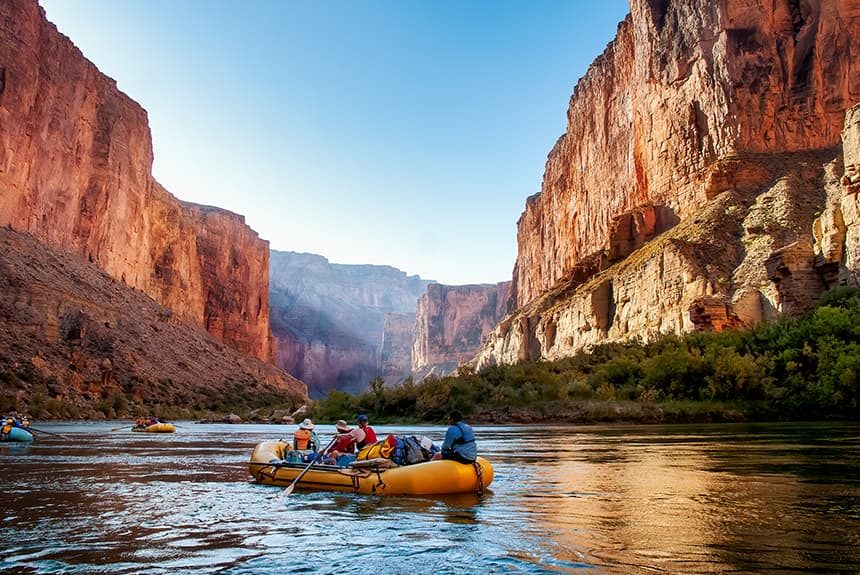CNN reports that the Colorado River is experiencing a decline. It has severe implications for farmers in Arizona and California, who rely on it for irrigation, electricity, and drinking water supplies.
Significance of the Colorado River
Snow melts from the Rocky Mountains of Colorado, Utah, and Wyoming, flowing through its tributaries, feeds the Colorado River. It’s two vast drainage basins – the Upper and Lower Basins, feeding lakes and dams that supply 40 million people in seven western states and Mexico and irrigate more than 5 million acres of farmland (Kann, 2021).
The article states that “Las Vegas relies on the river for 90% of its water supply, Tucson for 82%, and San Diego for approximately 66%.” Los Angeles, Phoenix, and Denver also rely heavily on a significant portion of their water supply from the river. Experts say that the river is the ‘lifeblood of the American West’ and cities that are now thriving would not have been possible without it.
The River is drying up
The continuous depletion of the Colorado River alarms scientists, farmers, and policymakers across the Southwest and could indicate. For two decades, the river has been plagued by overuse. The demands of water from the seven states have outpaced what the river can supply. According to the article, the river has shrunk by 20% since 2000, with climate change partly to blame (Kann, 2021).
The dwindling water supply from the river is affecting farmers who rely on it for irrigation and the lakes that depend on it to generate power.
In the past century, Colorado River management has decided how much water each state can draw from the river, a contentious exercise that has sometimes led to Supreme Court intervention. But lately, states are having a more painful job of deciding who will receive less water. In the future, decisions surrounding the division of water are expected to become more contentious as the river continues to shrink, the article states.
Factors that contribute to the shrinking of the Colorado River
The article describes the factors that contribute to the worsening water problem in Arizona and California, even extending to Mexico in the years to come, to wit:
- The first is the agreement on water allocation made almost 100 years ago, which established the guidelines for how the Colorado River’s water will be allocated among the seven states.
- Second, the water allocation was based on an overestimated capacity of the river, which has inflated the amounts of water allocated to the states.
- Third, as dams and canals were built throughout the 20th century to generate electricity and supply water to neighbouring states, political actors ignored the reality that the river has its limits. These massive infrastructures have stretched the river beyond its limits for decades.
- Fourth, climate change is heating the atmosphere and melting the ice caps in the mountain ranges in southern Wyoming, western Colorado, and Northeastern Utah, which could reduce the amount of water flowing in the river.
- Fifth, the drought that began in 2000 and persisted for two decades has reduced river flow and contributed to the partial shrinkage of Lake Mead. The article cited a study on the North American megadrought published in the Science journal, which finds that the period from 2000 to 2018 was the driest season for the Southwest since the 1500s and attributed half of the drought’s severity to climate change.
Scientists believe that the river’s reduced flow, insufficient snow and rain, lingering droughts, and the increasing temperature of 1.4°c (2.5°f) across the river basin will lead to another more serious event: the aridification of the region. The unfolding of this event is explained in the report.
Scientists believe that without significant reductions in GHG emissions, river flow can shrink by as much as 31% by the middle of this century.
On the other hand, farmers are pumping more water out of the aquifers as an alternative water source, which would allow them to survive the cuts to Colorado’s water supply; however, digging more wells is not a sustainable solution. It will soon deplete all the aquifers, making farming less and less profitable in the years to come.
Preparing for the future
The article explains that what will happen in the next 100 years hinges on the decisions surrounding the division and management of the Colorado River, which are expected to be made in 2026. “A failure to reach an agreement could usher in an era of uncertainty for the basin’s 40 million water users and increase the likelihood of legal conflicts”, according to John Ensminger, the general manager of the Southern Nevada Water Authority.
States and farmers are exploring alternative options to prepare for dwindling water supplies in the future. These options range from replacing farms with solar panels and wastewater treatment and reuse to the more expensive solution of desalinating the saltwater off the shores of Mexico, if the water crisis worsens.
To read this interesting report, click the link below:
Source:
Kann, D., Rigdon, R., & Wolfe, D. (2021, August 21). The Southwest’s most important river is drying up. CNN. Retrieved from https://edition.cnn.com/interactive/2021/08/us/colorado-river-water-shortage/



Leave a Reply